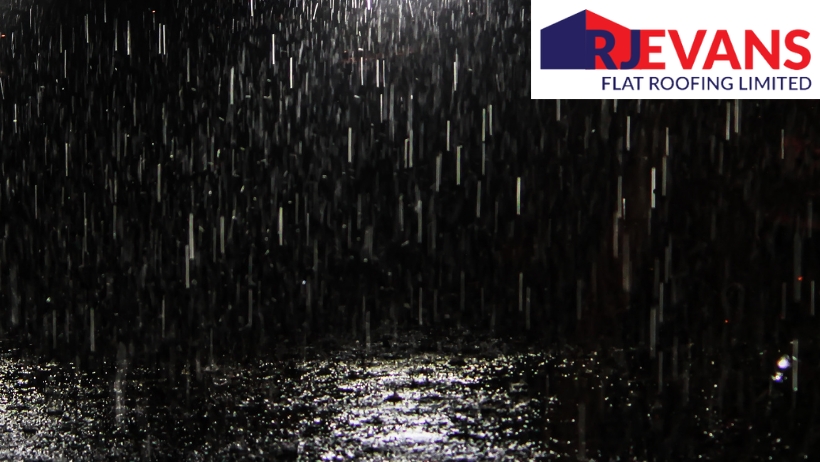I agree Our site saves small pieces of text information (cookies) on your device in order to deliver better content and for statistical purposes. You can disable the usage of cookies by changing the settings of your browser. By browsing our website without changing the browser settings you grant us permission to store that information on your device.

Weather can play a big part at which speed cut edge corrosion develops. Once developed. Certain weather conditions can lead to damage to metal cladding due to corrosion to be much more severe than if the roof was exposed to other weather conditions.
Rainfall is the most significant factor which contributed to cut edge corrosion. As rainwater falls it can becomes trapped in several places. This includes on parts of the roof where the protective coating has deteriorated. And areas where there is a build-up of debris. This trapped water causes the area around to become moist. This type of environment is ideal for the developing of corrosion. Notice both issues are caused by at least one of the following failures, a lack of regular roof inspections or not carrying out any required maintenance work.
Fluctuations in temperature can also lead to cut edge corrosion by causing splits and cracks in the protective coating covering the metal cladding. The reason for this is the process of thermal movement, as the temperature rises the metal cladding begins to expand. Then when the temperature falls it begins to crack. Over time this places strain on the protective coating, leading to cracks and splits developing. Now if you combine these splits with rainfall you have an ideal environment for corrosion to develop. A key thing you can do to eradicate this problem completely is when the protective coating of your cladding fails, is to use a Pu liquid coating. If you use a quality Pu liquid coating, it will have polymers which allow for it to be highly elastic. This means the risk of thermal movement issues in the future are completely minimised.
Humidity can be a contributing factor to cut edge corrosion (1). Humid locations help create a moist environment which allows corrosion to thrive. Humidity provides a dual threat. It can accelerate the corrosion process if there is any trapped water on the surface of the metal roof cladding. And it can lead to condensation forming on the underside of the roofing. This can lead to situations where corrosion is developing on both sides. If your building has metal roofing and you are in a location which encounters high humidity, you should be extra diligent in booking regular roof surveys and be prompt in carrying out any repairs which are necessary.
Strong winds can also play a role in cut edge corrosion developing. Strong winds can cause problems in a few ways. Such winds, can blow debris on to the roof, which if not cleared will allow water to become trapped. Obviously, this trapped water will create a moist environment ideal for the development of corrosion. Another problem caused by strong winds is damaging or moving either the metal roof cladding or the protective coating which covers it. This is a problem as any exposure of the metal to the elements will allows the possibility of corrosion developing.
As any roofing contractor will tell you, the quality of the install and materials used will maximise the lifespan of your roof. The way to ensure this happens is to use a reputable approved contractor. Then make sure quality accredited materials and coatings are used for the construction of your roof.
Understandably you are not always in control of this factor as you may have inherited the roof from a previous owner or have taken over managing the facility where the roof is present. However, whether this is the case or not you can ensure the roof is regularly inspected. Then ensure any maintenance needs which are identified are conducted promptly. The regular inspection and maintenance of a roof are repeatedly stated as being important throughout the roofing industry. But it really cannot be repeated enough. The early identification of issues. Then, quickly dealing with issues, will lead to huge cost savings over a 20-year timespan.
Whenever cut edge corrosion is identified. It is always important to act fast, as the problem will only get worse. The difference between fast response and slow response could be significant. From the simple process of a liquid coating which is a relatively cheap repair. Through to the expensive replacement of the metal cladding or in extreme cases the entire roof system. The time from issues being identified and the roof repair taking place is often the main indicator in the cost. The more time taken to get the repair done will equate to higher costs.
A key part of maintenance often over looked is the sweeping of a roof after strong winds or heavy rainfall. Simply clearing debris after such weather can really minimise your repair costs over the life time of the roof.
In summary, certain weather conditions can play a big part in the velocity at which cut edge corrosion develops and then the speed at which it becomes a serious issue. The 3 steps you can do to minimise the impact the weather has on your metal roofing are as follows; use a good contractor for the installation, schedule regular maintenance, fix any issues no matter how small as soon they are identified. Following these 3 steps, you will minimise the impact the weather has on your industrial roofing, minimise any repair costs and maximise the lifespan of the roof.
If you have any questions about dealing with cut edge corrosion or would like a quotation for cut edge corrosion treatment. Please get in touch with us. You can do this through our contact form or call us on 01277 375 511. One of our friendly team of roofing experts will be delighted to help you.